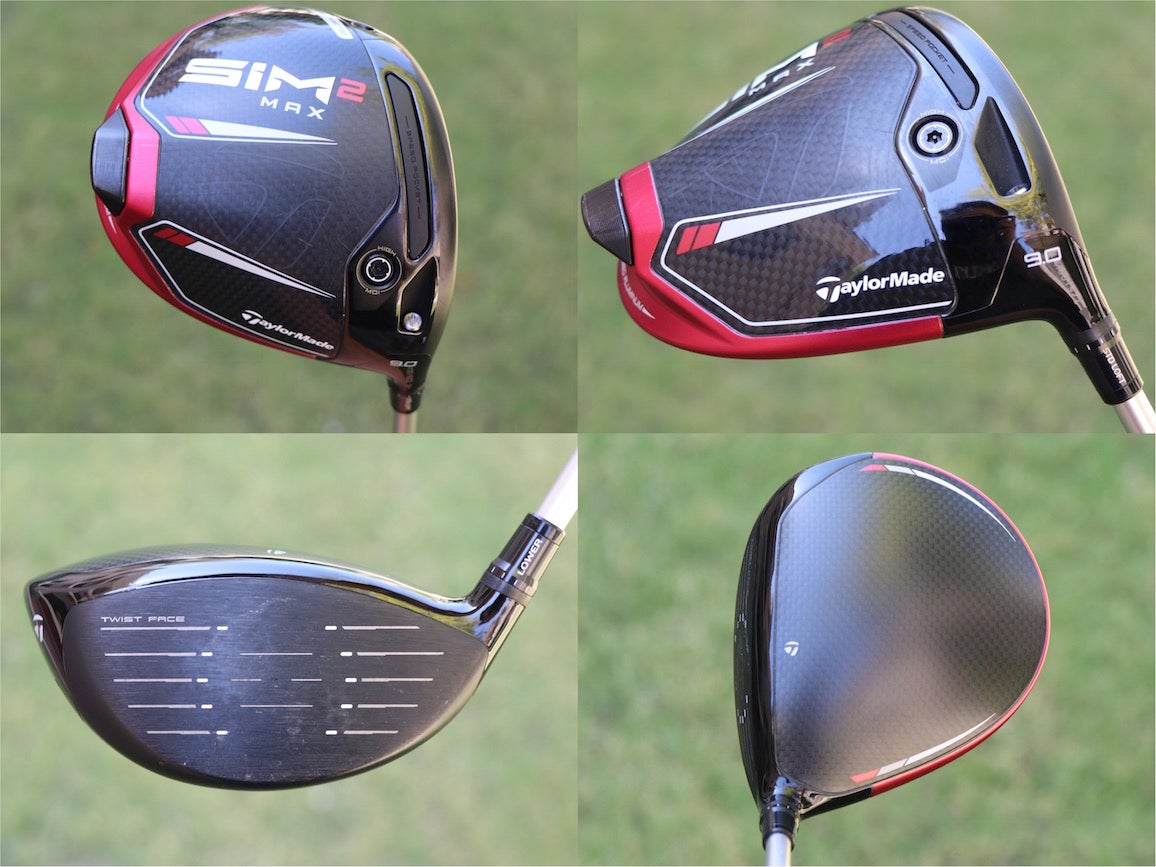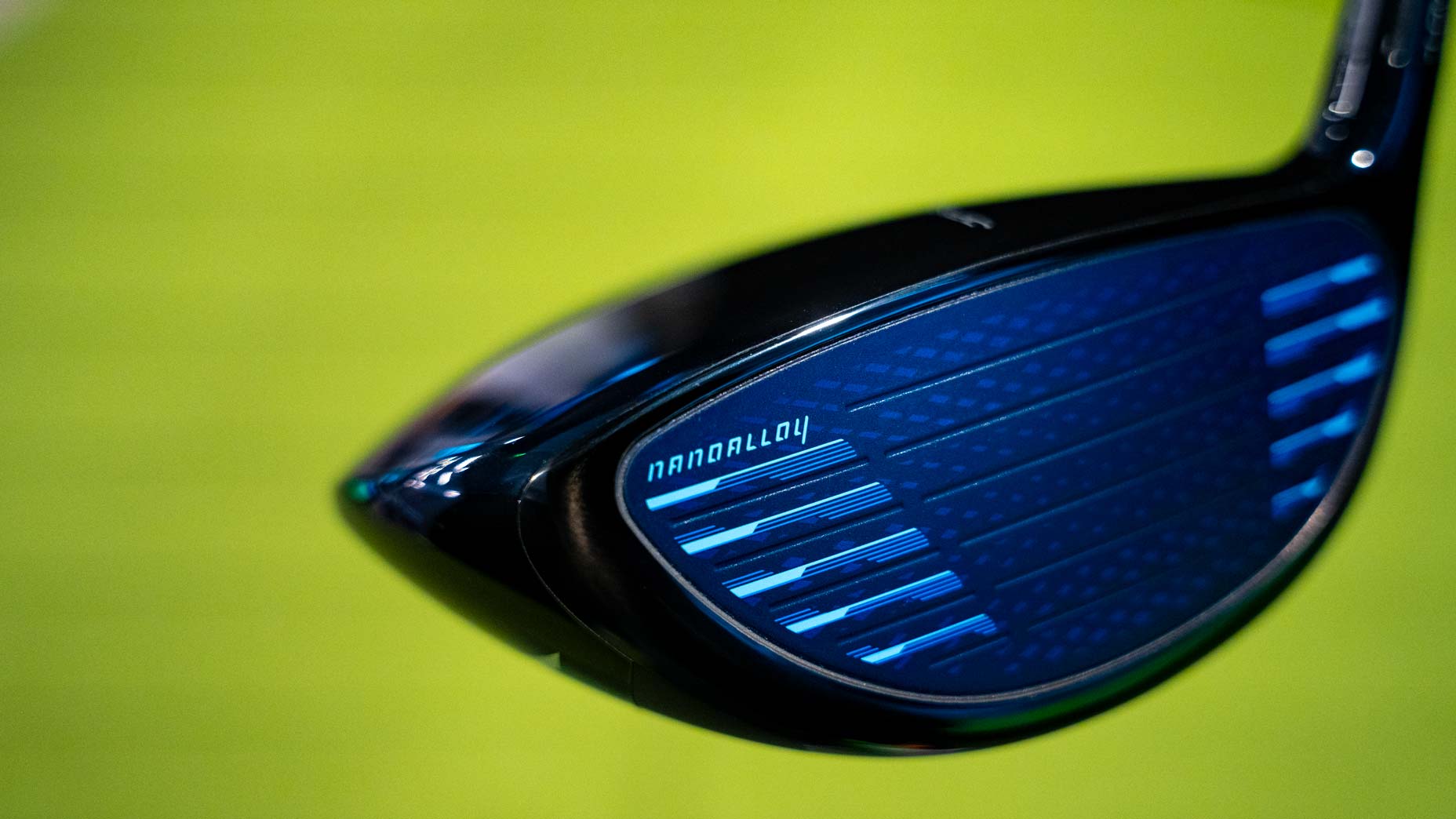Welcome to GOLF.com’s ClubTest Proving Ground, where Managing Equipment Editor Jonathan Wall and Senior Equipment Editor Andrew Tursky put the latest designs and groundbreaking technology in the equipment space to the test on the range and the course.
The distance debate is seemingly never-ending in golf. Those who govern the game, those who play the game, and those who make their living from the game all have an opinion. People on the “more distance is bad” side look at technology advancements as a villain that’s ruining golf courses and professional competitions. Those on the “more distance is good” side say that better technology helps make the game more fun and enjoyable for all, and ‘who cares?‘ if the pros shoot a couple strokes lower.
Fair points on both sides.
For this test, I wanted to see how much driver technology has actually increased distance over the years. To conduct the test, I took five TaylorMade drivers from different years over to True Spec Golf in Scottsdale to hit shots, using a modern 2021 golf ball, on a Foresight GC Quad launch monitor to gather some data.
Let’s take a look at the clubs I used for the test before we get to the full results and my findings below.
The Tools
For this specific test, I decided to hit drivers all manufactured by TaylorMade. Why did I choose them? Well, I have played numerous TaylorMade drivers in my golfing career, so I already had a few laying around, and they all have similar shaft profiles. A quick trip to the local used club store helped me pick up a couple others to fill out the lineup. While I could have used drivers from various companies, I didn’t want to make this a company-versus-company test. Maybe we’ll do one of those in the future, but this test is simply to see how far technology has advanced, not how technology compares amongst competitors.
So, here are the drivers I chose:

In 1979, TaylorMade released its first driver ever, the original Pittsburgh Persimmon metalwood. It measured less than 200cc, had 12 degrees of loft on it, and it was a first-of-its-kind design that was part of a shift in the landscape of the driver market.
A few years later, TaylorMade released a Pittsburgh Persimmon “Strong One” version of the metalwood that measures 10 degrees of loft. I used this “Strong One” driver, equipped with its original steel shaft, as the baseline driver for the test.

The next driver I hit is a certified classic; the TaylorMade R7 Quad that released to the public in 2004. The titanium-headed, 410cc driver was a game-changer due to its four interchangeable weights in the sole, allowing golfers to change parameters such as launch, spin and trajectory bias. If you look across the industry today, many companies continue to use adjustable weights in their club heads, proving that the concept was indeed effective.

Next up was the driver I used throughout my college days: a TaylorMade R9 460 released in 2009. This 460cc driver had a number of notable technologies still used today, including TaylorMade’s Flight Control Technology that allowed for hosel adjustments that controlled face angle, lie angle and loft. It also features Inverted Cone Technology for faster ball speeds on off-center hits, and a sole weight that moves CG rearward in the head for more forgiveness.

Then, we have the TaylorMade SLDR S released in 2014. TaylorMade’s SLDR series drivers were noteworthy for their sliding adjustable weights in the sole, and their extremely low-and-forward CG (center of gravity) locations. Due to the designs of the SLDR heads, they were some of the lowest spinning of all-time, and one of the most polarizing, too.

That takes us to one of TaylorMade’s current models on the market, the SIM2 Max released in 2021. This driver uses technologies that have been honed and refined from the previous 40 years, including a few new designs. The SIM2 Max is a 460cc head that has TwistFace for off-center hits, a 24-gram Inertia Generator for forgiveness, a Speed Injection port to ensure maximum ball speed, a Speed Pocket for shots hit low on the face, a Forged Aluminum Ring in the rear of the head, and the crown and sole is made from lightweight carbon composite (rather than the titanium material used in yesteryears).
But the question is, how much have these technology advancements really impacted distance throughout the years?
The Results
To conduct this test, I took the five drivers over to True Spec Golf in Scottsdale, using a Foresight GC Quad launch monitor to track the data. This 2-handicap golfer sought to hit three solid shots with each driver, throwing out any obvious outliers. Here are the results:

For a look into the testing process, check out the @FullyEquippedGolf TikTok video below.
Conclusions
Analyzing driver data can be somewhat subjective, which is why it’s best to seek professional advice from a trusted fitter or golf professional when conducting your own testing. Personally, here are 3 of my major takeaways from the results:
1) Spin differences
First of all, spin rates on the “Strong One” were much less than expected at 2526 rpm; I guess that’s why it’s called the Strong One. Throughout the years, though, spin has definitely dropped overall, which is especially beneficial for high-speed, high-spin golfers. The SLDR S, one of the lowest spinning drivers of all-time, didn’t disappoint, as it produced the lowest spin rates of the bunch at 2097 rpm. The SIM2 Max, producing around 2100 rpm, probably has the most optimal spin window for me. The biggest drop in spin rates occurred from 2004 to 2009, where spin dropped from 2634 rpm with the R7 Quad down to 2262 rpm with the R9 460.
2) Speed increases
Ball speed, which shows how fast the ball is coming off the face, increased nearly 13 mph from the 1980’s until now, and more than 5 mph from 2004. Keep in mind that 1 mph of ball speed generally equates to about 2+ yards of distance. That’s certainly one of the biggest factors contributing to the huge distance increases that I saw in the test. Also, since ball speeds have risen significantly on off-center hits throughout the years, the newer models are much more accurate, too. While the SLDR S appears to show strong distance numbers, even compared to the new SIM2 Max, the bad shots with the SLDR S are severe (for me, that meant an unplayable low hook).
3) Ready for launch
Look how much higher the SIM2 Max is launching off the club face compared to the rest of the drivers. With high-launch and low-spin being the goal for distance and accuracy, the SIM2 Max finds the most optimal performance data from the bunch, launching at 12.1 degrees and spinning at 2127 rpm. Compared to the R7 Quad that launches at 9.1 degrees with spin at 2634 rpm, it’s no surprise the ball goes 24.4 yards farther now.
My advice for golfers who currently play with older technology is to conduct this test for yourself. Get in touch with your local professional or club fitter and ask if they demo days or fitting appointments available. The only way to know if new technology is worth it or not is to test it out. Is more ball speed and better forgiveness worth the price of admission? I can’t answer that for you, but I can definitively say, for me, that new technology produces more distance (and forgiveness) than old technology.
Tune in for more Proving Ground tests going forward, and don’t forget to submit your testing ideas to @FullyEquippedGolf on Instagram.
Want to overhaul your bag for 2021? Find a fitting location near you at GOLF’s affiliate company True Spec Golf. For more on the latest gear news and information, check out our latest Fully Equipped podcast below!










